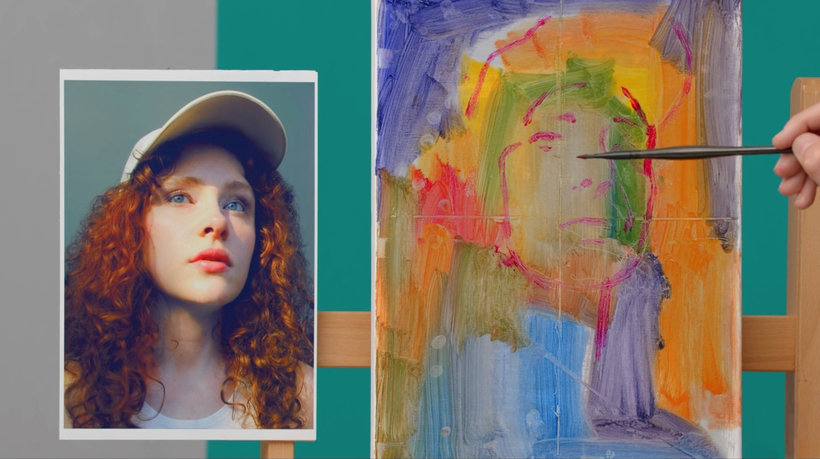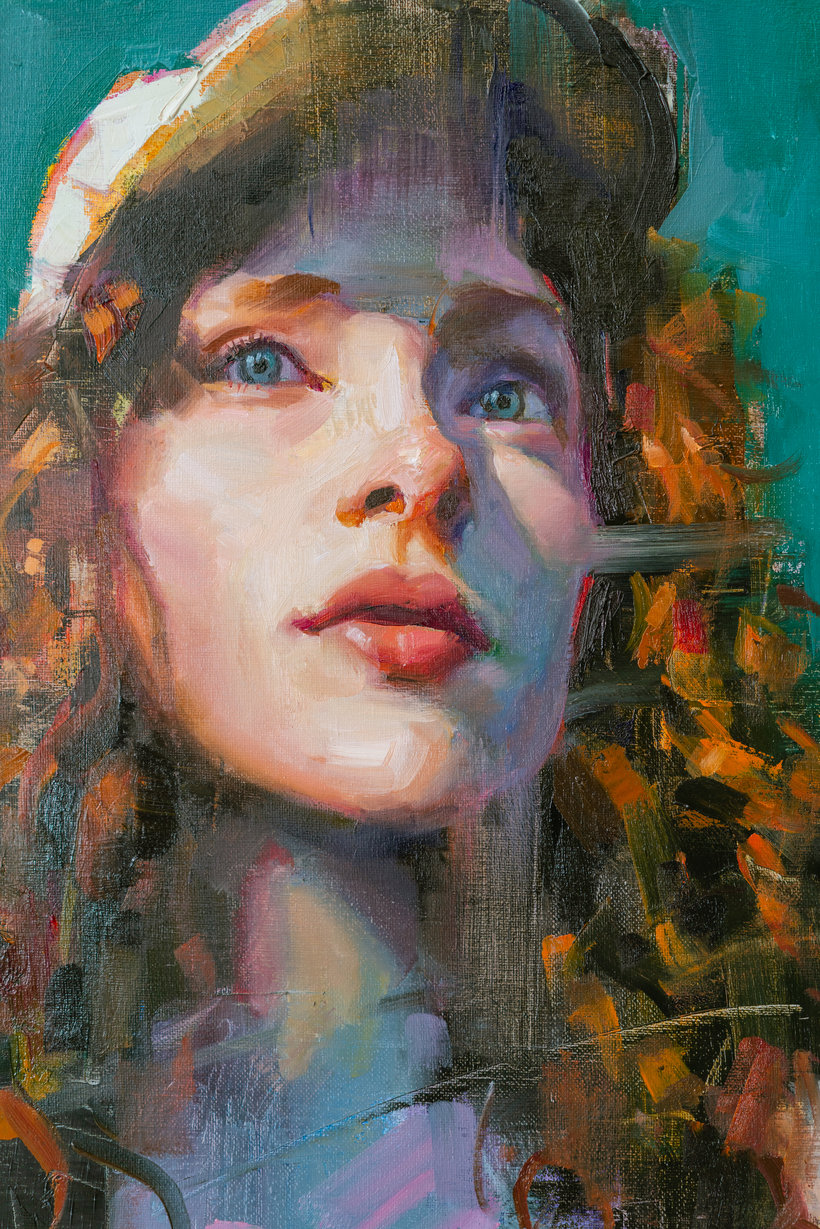Contemporary Oil Portraiture
Course final project
A course by Torsten Wolber , Painter
About the final project for: Contemporary Oil Portraiture
Contemporary Oil Portraiture
“Now we have come to the end of the course. Thanks for taking part! I hope I was able to help you lose your fear of the white canvas. But the most important thing is that you had fun doing it. Now that you can paint more freely and openly, it is time to get started on your graduation project. Let me remind you once again that it's not about following my template true to detail, but rather about letting your creativity run free. So our forum will be rich in various original projects and provide more inspiration. But before you get started, I would like to go through the individual steps for your final project with you again. • Pick a photo template for the portrait you would like to paint. • Prepare your own canvas. To do this, it is first sanded, sealed with gesso and then sanded again. Finally, you apply the imprimatur by drawing wide, free strokes. • Now you can devote yourself to the first areas of color and roughly put the face in the picture with the help of a grid and foil. You will first block this impression negatively and then work it out further. • When blocking in, the first tone areas are defined and gradually all tone values are applied. Pay attention to the color temperature, the light and the shadows to create contrast and increase the tension of the picture. • Go a step further and try to paint more freely and impulsively. Remember that you shouldn't paint too precisely, but based on your feelings. • Then it's the turn of the finer details. Work out the hair and facial features more precisely, but without losing sight of the surfaces. It's always about seeing shapes and achieving strong expression. Then you can devote yourself to the bright colors and redefine edges. • Now you pay particular attention to the proportions and the tonal values of the image. To do this, turn it around to get a new perspective of the shapes and always keep an eye on the surfaces. This is how you add shadows and finer nuances. • In order to match the tonal values more closely, compare the tonal areas of the original with the tonal values of your image through a black mirror (or through the screen of your switched off mobile phone) and finally make the necessary corrections. Finally, the finishing touches come. Do not dwell on it too long and only correct the very rough details that are particularly striking. Then you can also declare your final project finished.





Partial transcription of the video
“As we conclude our course. i wish to take a moment to recap the lessons we've explored and the new skills we've acquired. It's been a journey of growth and learning together. Initially. we examined various tools essential for creating an oil portrait. focusing particularly on the ones I personally utilize when painting an oil portrait. We learned to create our own canvas and became familiar with a basic color scheme made up of three primary colors and three secondary colors. Additionally. we delved into the reasons why we choose to work with only these three colors. and how we can create ne...”
This transcript is automatically generated, so it may contain mistakes.
Course summary for: Contemporary Oil Portraiture
-
Category
Illustration -
Areas
Fine Arts, Oil Painting, Painting, Traditional illustration

Torsten Wolber
A course by Torsten Wolber
The fascination for expressive, defined, and atmospheric pictures has been with painter Torsten Wolber since he was a child. When he worked in the world of illustration, he created covers and images for video game companies, advertising agencies, and newspapers, particularly online ones. For a long time, he set aside his desire to make a living from painting, but because of an unprecedented event, he decided to devote himself to plein air painting, his true artistic passion. It was only a few years later that he felt ready to work exclusively in this sector.
From the time he was studying graphic design, he was inspired by classic painters such as John Singer, Sargent, Sorolla, Anders Zorn, and Richard Schmid. He currently draws inspiration from the painting process itself and likes to let himself be carried away by oil painting. His style is characterized by being free, defined, and emotional, but also by its sense of reflection and the calm it transmits. His work includes mainly landscapes, social themes, and portraits that can be found in galleries and private collections in countries such as Germany, the United States, Japan, Australia, and England.
- 98% positive reviews (561)
- 15,406 students
- 23 lessons (4h 52m)
- 14 additional resources (5 files)
- Online and at your own pace
- Available on the app
- Audio: German, English, Spanish (Latam), French, Italian, Portuguese, Turkish
- German · Spanish · English · Portuguese · French · Italian · Polish · Dutch · Turkish
- Level: Beginner
- Unlimited access forever
Category
Areas

